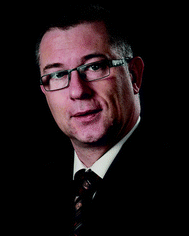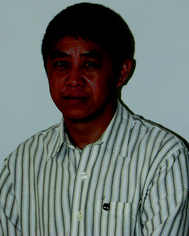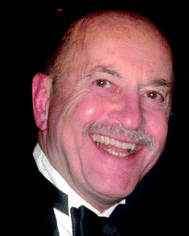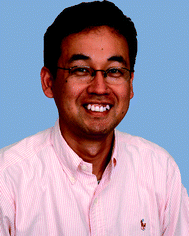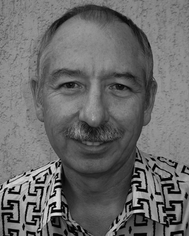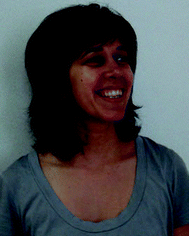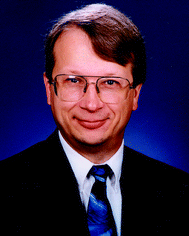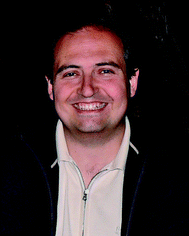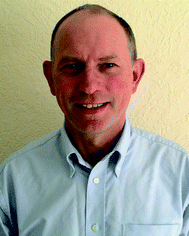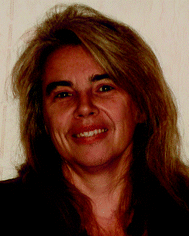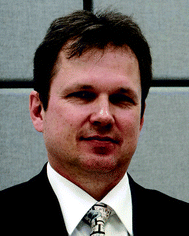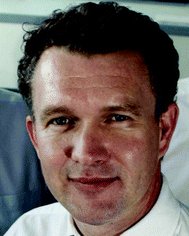Editorial Board profiles
Frank Vanhaecke
Frank Vanhaecke obtained his Ph.D. degree in 1992 from Ghent University, Belgium. He continued carrying out scientific research as a post-doctoral fellow at the same university and also enjoyed a postdoctoral stay at the Johannes Gutenberg University of Mainz, Germany. Frank is Professor in Analytical Chemistry at Ghent University, where he leads the ‘Atomic & Mass Spectrometry—A&MS’ research unit. His research interest is the determination, speciation and isotopic analysis of trace elements using ICP-mass spectrometry. Special attention is devoted to the direct analysis of solid materials using laser ablation-ICP-MS, the development of methods relying on the use of ICP-MS for ADME studies in the pharmaceutical industry and isotope ratio determination using single- and multi-collector ICP-MS in the context of elemental assay via isotope dilution, tracer experiments with stable isotopes and the use of small natural variations in the isotopic composition of metals and metalloids for unraveling geological and biological processes. He is (co-)author of more than 200 peer-reviewed journal papers and 15 book chapters and, together with a colleague from KU Leuven, he edited a book on isotopic analysis with ICP-MS. In 2011, he received a ‘European Plasma Spectrochemistry Award’ for his contributions to this research field. Frank is a fellow of the RSC.
Shan Gao
Shan Gao is a full Professor for Geochemistry at China University of Geosciences (Wuhan) and Adjunct Professor for Geochemistry at Northwest University (Xi'an). He received his Ph.D. from China University of Geosciences (Wuhan) in 1989. His current interests are: laser ablation ICP-MS and its applications to in situ elemental and isotopic analysis of minerals, chemical composition of the continental crust, and chemical exchange between the crust and the mantle. He is author and co-author of approximately 90 original papers in international journals.
Gary Hieftje
Gary M. Hieftje is Distinguished Professor and Mann Chair of Chemistry at Indiana University in Bloomington, Indiana. His research interests include the investigation of basic mechanisms in atomic emission, absorption, fluorescence and mass spectrometric analysis, and the development of instrumentation and techniques for atomic methods of analysis. He is interested also in the on-line computer control of chemical instrumentation and experiments, the use of time-resolved luminescence processes for analysis, the application of information theory to analytical chemistry, analytical mass spectrometry, near-infrared reflectance analysis, metallomics, and the use of stochastic processes to extract basic and kinetic chemical information. He has won numerous awards in the fields of analytical chemistry and spectroscopy, has held major offices in several scientific societies, and has served on the editorial boards of many major journals. He is the author of over 550 publications, 10 books, and 15 patents. More than 65 students have received doctorates under his direction.
Takafumi Hirata
Takafumi Hirata is professor of the Graduate School of Science at Kyoto University. He was educated in inorganic chemistry, geochemistry and analytical chemistry at Tokyo University, and he received the Alan Date Memorial Award in 1989. He was the user of the first ICP-MS instrument (VG PlasmaQuad1) installed in Japan, and therefore, he was well known as the “first torch melter” in Japan. His main research subject is, (a) age determination of small minerals using laser ablation-ICP-MS technique and (b) metallomics using non-traditional stable isotopes. He is now trying to apply the newly developed femtosecond laser ablation technique to metallomics.
Norbert Jakubowski
Norbert Jakubowski studied physics at the University of Duisburg/Essen and completed his Ph.D. in physics at the University of Hohenheim. He was a senior scientist at the Institute for Analytical Sciences, Dortmund and Berlin (from 1983 to 2009) and is now Head of BAM's Division I.1 Inorganic Chemical Analysis and Reference Materials (since July 2009). His research interests include inorganic trace and ultra trace analysis of liquids and solids by use of ICP-MS and GD-MS, elemental speciation analysis and development of elemental tags for quantitative detection of biomolecules, and in particular for immune-imaging by LA-ICP-MS. He has received awards including the Alan Date Memorial Award from VG Elemental, Surrey, GB (1990), Zimmer International Scholar from the University of Cincinnati, USA (2005) and a Waters Symposium Award for Pioneers in ICP-MS (2006).
Gunda Köllensperger
Gunda Köllensperger is Professor at the Division of Analytical Chemistry, Department of Chemistry at the University of Natural Resources and Life Sciences BOKU, Vienna. In 2011 she was appointed as guest professor at the Humboldt University in Berlin. Her expertise is the development of quantitative bioanalytical assays based on mass spectrometry (elemental and molecular) in combination with chromatographic separations. The methodological research is related to preclinical drug development and bioanalysis in cell fabrics. Within the Austrian Centre for Industrial Biotechnology (ACIB) she is responsible for the core facility on metabolomics.
John Olesik
John Olesik was born in the United States, in 1955. He received his Ph.D. in Analytical Chemistry from the University of Wisconsin-Madison, USA, in 1982, and was a postdoctoral research associate in Analytical Chemistry at Indiana University from 1982 to 1984. He was an Assistant Professor in the Department of Chemistry at the University of North Carolina-Chapel Hill from 1984 until 1991. He has been a Research Scientist and Adjunct Associate Professor in the School of Earth Sciences at The Ohio State University since 1991, where he is also currently Director of the Trace Element Research Laboratory. His current research interests are: fundamental processes in plasma optical emission and mass spectrometry, electrospray mass spectrometry, ion-molecule reactions to overcome spectral overlaps in plasma mass spectrometry, aerosol generation and transport, laser ablation sampling, elemental speciation, and applications of optical and mass spectrometry in a variety of areas including materials, biological, biomedical and earth sciences.
Martín Resano
Martín Resano obtained his Ph.D. from the University of Zaragoza in 1999. After a post-doctoral period at Ghent University (Belgium), he became Professor of Analytical Chemistry at the University of Zaragoza in 2003. He currently leads the research group “M.A.R.T.E.” and focuses his research on the development of direct methods for the elemental and isotopic analysis of solid samples, mostly using electrothermal vaporization-inductively coupled plasma mass spectrometry (ETV-ICP-MS), laser ablation (LA)-ICP-MS and high-resolution continuum source graphite furnace atomic absorption spectrometry (HR-CS GFAAS), topics to which he has contributed more than 80 publications.
Barry Sharp
Barry Sharp studied chemistry and physics as an undergraduate which was followed by a Ph.D. at Imperial College. After graduating, he joined the staff as a Lecturer in Analytical Chemistry and after 3 years moved to the Macaulay Institute in Aberdeen, eventually becoming head of its Analytical Division. He joined the Chemistry Department at Loughborough University in 1990. His research is focused on the development of elemental mass spectrometry using inductively coupled plasma source and laser sampling methods for mass spectrometry. His work covers a range of topics from fundamental studies on mass spectrometry to the development of specific applications, mostly in the bio-medical and nuclear sciences. He has published over 100 papers and was a founding member of the JAAS Editorial Board, with the late John Ottaway, and a former Editorial Board Chair in which capacity he served for 8 years.
Joanna Szpunar
Joanna Szpunar graduated from the Warsaw University of Technology in 1986. She was a research fellow at the Polish Academy of Sciences (1987–1988), and then she moved (1989–1992) to the University of Warsaw from which she obtained her Ph.D. (1992) and D.Sc. (habilitation) (2000) degrees. In 1993–1994, she was a research fellow at the University of Antwerp (U.I.A), and then a fellow of the European Environmental Research Organization at the University of Bordeaux (France). In 1997 she joined the French National Research Council (CNRS) as research engineer and has been working in the Group of Bio-inorganic Analytical Chemistry at the UMR 5034 in Pau ever since. Her research interests concern HPLC, CZE and hyphenated techniques applied to speciation and fractionation of trace metals and metalloids in biological systems.
Dmitry R. Bandura
Dmitry R. Bandura received his M.Sc. in engineering physics (1985) and Ph.D. in technical sciences (1992) at the Moscow Engineering Physics Institute. Most of his career has been devoted to developing Mass-Spectrometry based technologies for in situ elemental analysis of micrometeoroids (at MEPhI), ICP-TOF-MS (at GBC Scientific Equipment, Australia), ICP-DRC-MS (at MDS Sciex, Canada), Mass Cytometry for multi-parametric detection of biomarkers in individual cells via elementally tagged antibodies (University of Toronto). Dr Bandura co-founded DVS Sciences Inc. in 2004 to bring the instrumentation, reagents and methods of Mass Cytometry to the market. Dmitry is currently Sr Director of Engineering and Principal Scientist at DVS Sciences, responsible for research and development of the CyTOF® line of products. His special research interests include plasma physics, ion optics, gas-phase ion-molecule chemistry, and single cell bioassays.
E. Hywel Evans
E. H. Evans studied for his BSc in Chemistry with Applied Biology at the University of Plymouth where he graduated with first class honours in 1986, followed by a PhD in Analytical Chemistry under the supervision of Prof Les Ebdon, which he gained in 1989. After this he went to work for Prof Joe Caruso as a postdoctoral research fellow at the University of Cincinnati in the USA where he worked on the development and application of novel plasma ion sources for mass spectrometry. He returned to Plymouth in 1992, and is now Head of the Centre for Chemical Sciences and Reader in Analytical Chemistry in the School of Earth Ocean and Environmental Sciences. His research interests include elemental speciation at ultra-trace levels, applications and fundamental studies of atomic mass spectrometry and development of novel plasma sources for atomic and molecular mass spectrometry. He is the author or co-author of over 60 publications, 8 books, and numerous conference presentations. He was awarded the Hilger Spectroscopy Prize in 1994 and the SAC Silver Medal in 2000, by the Royal Society of Chemistry.
| This journal is © The Royal Society of Chemistry 2013 |

